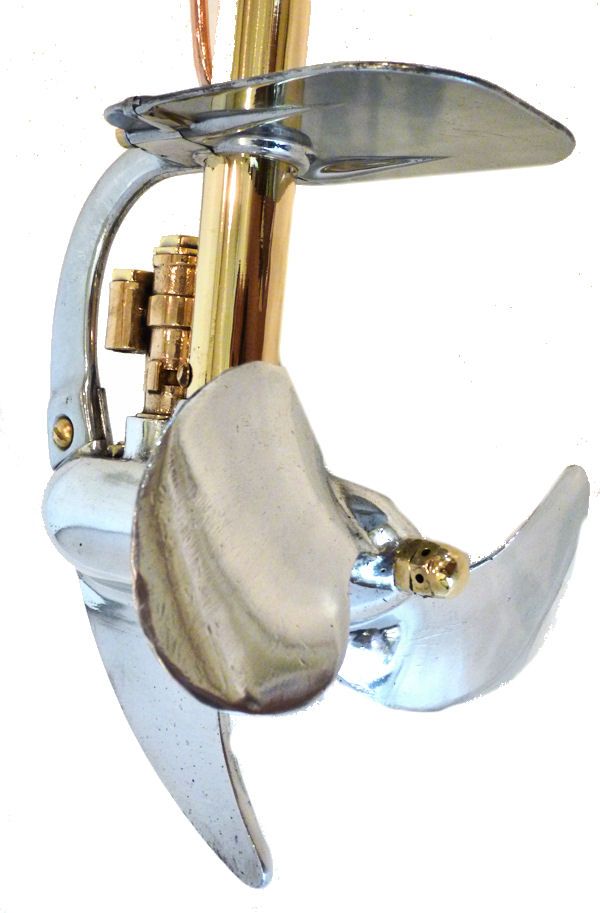1926 Johnson A 25 Waterbug Outboard Motor Display
1926 A 25 ANTIQUE JOHNSON OUTBOARD MOTOR DISPLAY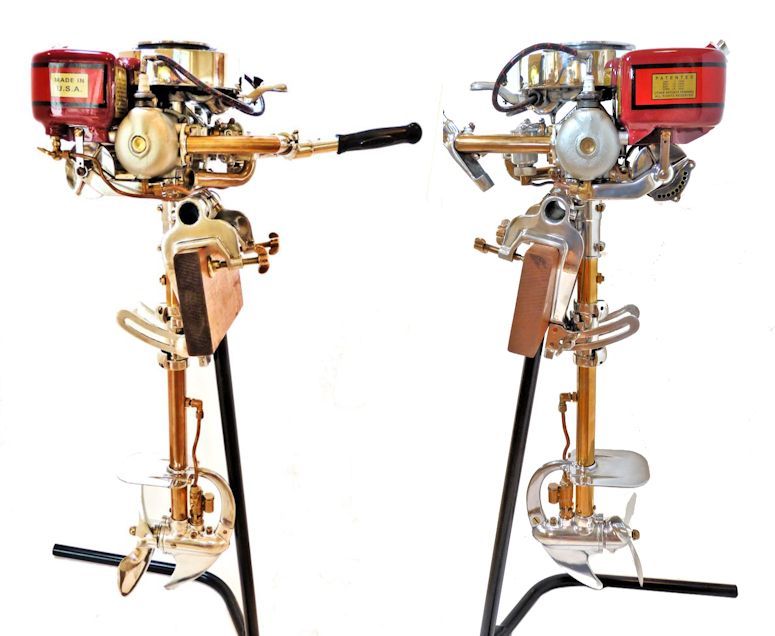 AMERICAN INDUSTRIAL MARINE FOLK ART Year: 1926 Name:Waterbug
AMERICAN INDUSTRIAL MARINE FOLK ART Year: 1926 Name:Waterbug
Model: A 25 Serial Number 39715H.P.2.00
Dimensions:>35“
H x 12“ W x 15 1/2“ D Weight: 35 pounds
Presented is a recent restoration of a highly desirable display using a resurrected 1926 outboard
motor that had its external parts taken apart, cleaned, polished and re-chromed where required, and then had new decals
added about a year ago. Many hours were spent by the restorer on making this an example of American manufacturing
art. Af>After all this effort, the original owner decided to
downsize his possessions and the motor is now up for resale at a price that is about 50 percent less than what these
restored motors are selling for in the up-scale galleries in South Florida, Aspen and Atlanta.This
2 H.P. Johnson outboard motor was originally made for the freshwater environment, but this one is not intended to be operated. It is intended
for “Display Only” and is not a running motor!
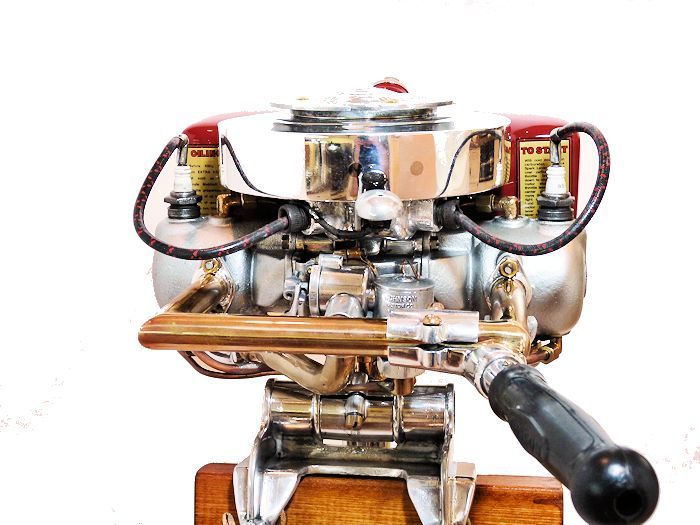

Upper
picture is the front of power head shown over the back of the fuel tank
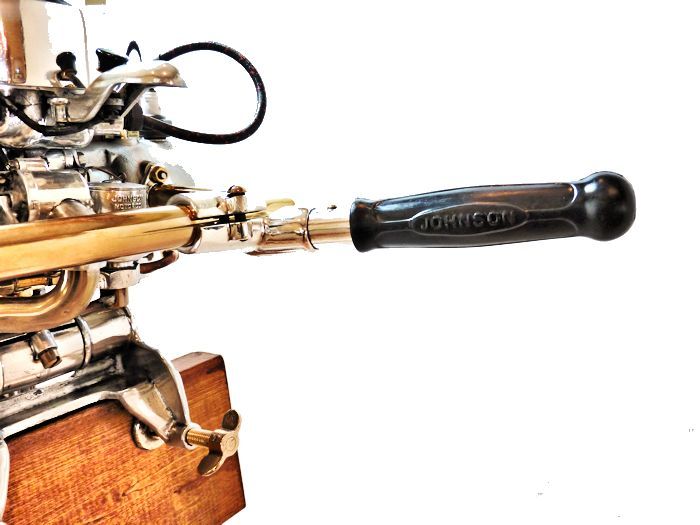 Upper picture shows the Flywheel with
Upper picture shows the Flywheel with
model A 25 and serial number 39715 above the Tiller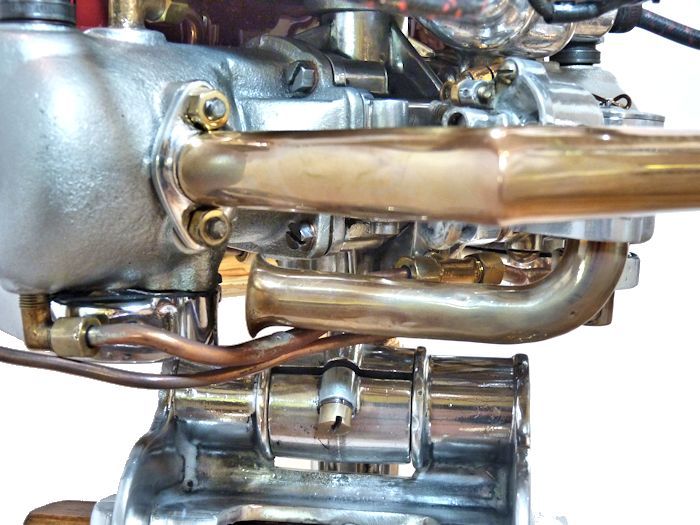
Very unusual carburetor air intake in the form of a trumpet. Feature
seen mostly on racing engines
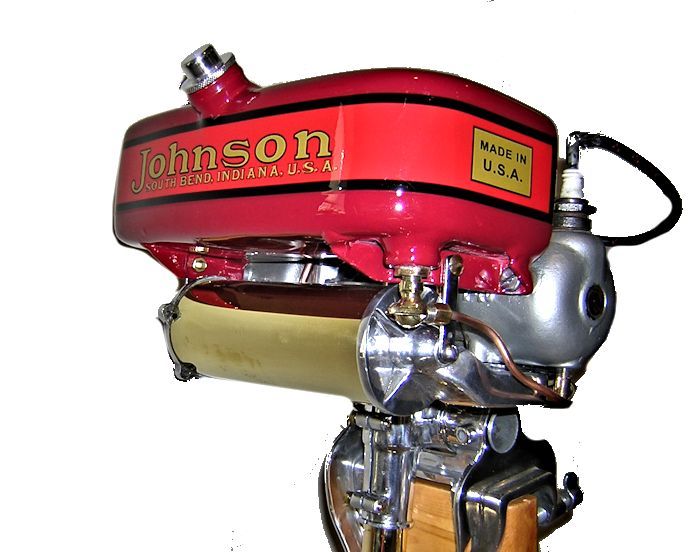
Unusual style bottom end shown above the cooling cylinder CONDITION:
The
paint decals and fittings are all bright and shiny. The copperhas begun
to darken slightly with a light patina which enhances the motor’s charm. JOHNSON HISTORY IN BRIEF: In the early 1900’s, four brothers from Terre Haute, Indiana–Lou, Harry, Julius and Clarence
Johnson–started making motors when they built a tiny marine engine for their rowboat in order to ride up the Wabash River
to shop. They soon founded Johnson Bros. Motor Company and began mass-producing inboard and outboard engines.
Within the next two decades, the Johnson company prospered. The
brothers were responsible for the United States’ first monoplane flight due to making a 2-cycle airplane engine–a device
they even tried on bikes. In 1921, Lou Johnson teamed up with a college student to design and produce the Johnson model A.
As a result, 7,000 of these motors were sold in 1923. Johnson was a leader in the industry and is noted for introducing: Tilt-up engine mount
The rope pull starter
Swivel shaft Small size magneto
ignition In 1926, Johnson
was the first to introduce the heavy outboard engine, which defied expectations of what such a device could do for airplanes.
By this time, they were also selling quick motors. By the close of the 1920s, the Johnson brothers had built an elaborate
outboard manufacturing facility close to Lake Michigan.
However,
the Johnson company was not without its misfortunes. At first, it withstood them: A 1913 storm destroyed the monoplane and
the shop it was built in. Then the 2-cycle engines saw success limited by the popularity of Henry Ford’s Model T cars. That
did not stop the Johnson business from growing during the 1920s. Then, the stock market crash of 1929 pummeled the economy at the same time the famous Sea-Horse brand was introduced.
Inventories of boats and motors were stockpiled. By 1932, Johnson had declared bankruptcy.
Outboard Marine Corporation: When Steve Briggs and Ralph Evinrude purchased the Johnson company in 1935, the business was in dire
straits. A deal to provide Sears-Roebuck with engines failed to materialize. By then the company had even entered the refrigerator
compression business. With the purchase, though, Johnson found some respite. A year later, the Outboard Marine and Manufacturing
Corporation (OMC) was formed, which put Johnson alongside Evinrude as a boat motor maker.
Bombardier Recreational Products: In
2001, Bombardier Recreational Products (BRP)–a company that still specializes in motorized recreational vehicles and power
sports engines–bought OMC. Thus the Johnson company is currently under the Bombardier umbrella.
